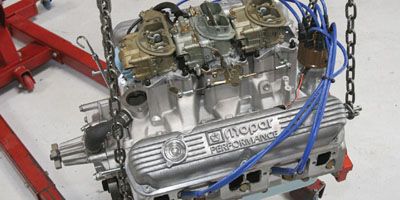
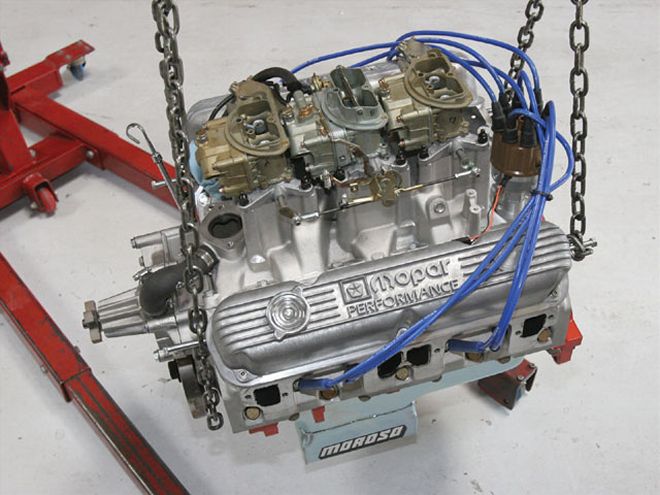 Imagine this under the hood of that A- or E-Body. It makes lots of power, too. All this can be yours with the swipe of the credit card.
Imagine this under the hood of that A- or E-Body. It makes lots of power, too. All this can be yours with the swipe of the credit card.
We'd plug this into a '71 Duster with some outrageous balonies, a 340 stripe with 410 printed on it, and drive it no-hood style everywhere. And we could, too, because unlike some of our engines that we've dropped from the bomb bay and stood clear, this engine doesn't require a blast shield or a flak jacket to check the timing curve. We know it's not going to let go because it was carefully assembled by the guys at Stanton Racing Engines under the direction of Mother Mopar instead of patched together by giggling staffers. Even though it looks complicated and unreliable, it isn't.
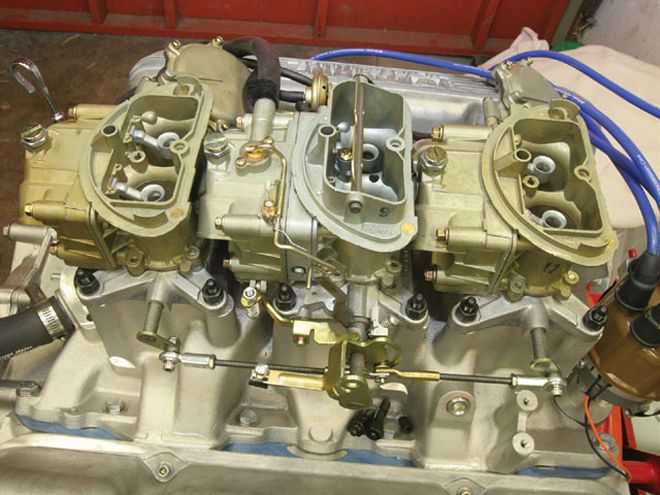 The Six Pack carbs are available separately from Holley under PN 0-4792 for the 350-cfm center carb and PN 0-4790 for the 500-cfm outboard carbs. The center carb has No. 61 jets, a 6.5 power valve, and a 0.031 pump nozzle. The outboard carbs don't have jets, rather a metering plate that controls the delivery of fuel. The plate is the equivalent of a No. 75 jet.
The Six Pack carbs are available separately from Holley under PN 0-4792 for the 350-cfm center carb and PN 0-4790 for the 500-cfm outboard carbs. The center carb has No. 61 jets, a 6.5 power valve, and a 0.031 pump nozzle. The outboard carbs don't have jets, rather a metering plate that controls the delivery of fuel. The plate is the equivalent of a No. 75 jet.
Despite the infusion of nearly 70 ci, the 410 is a lot like the '68 to '73 340 that famously boosted 340 Demons, Darts, and Dusters and looked great with a Six Pak under the hood of the Challenger T/A and the AAR 'Cuda. What makes the 410 better is its use of the larger 4.00-inch crank while maintaining the smaller main bearing journals of the original 340 LA block. The new block could be considered a hybrid of both because it also has LA and Magnum motor mount bosses, can take both head styles, and is available separately with late-model factory-style roller cam provisions. The rare 340 T/A race block had enough meat for four-bolt main caps but needed to be machined before use. The new 410 block comes standard with four-bolt main caps in the center three bearing positions.
Traditionally, the 340 had a bore of 4.04 and a 3.31-inch forged-steel crankshaft, a 10.2:1 compression ratio ('68 to '72), a four-barrel Carter AVS carburetor (non-Six Pak versions), and one of two flat-tappet hydraulic camshafts depending on the transmission that came with the car. The 410 has the same 4.04-inch bore but uses the forged-steel crankshaft for more inches and a set of three two-barrel carburetors just like the Six Pak option in the early '70s. It has a 10.6:1 compression ratio and makes 470 hp instead of the 340's advertised 290 hp.
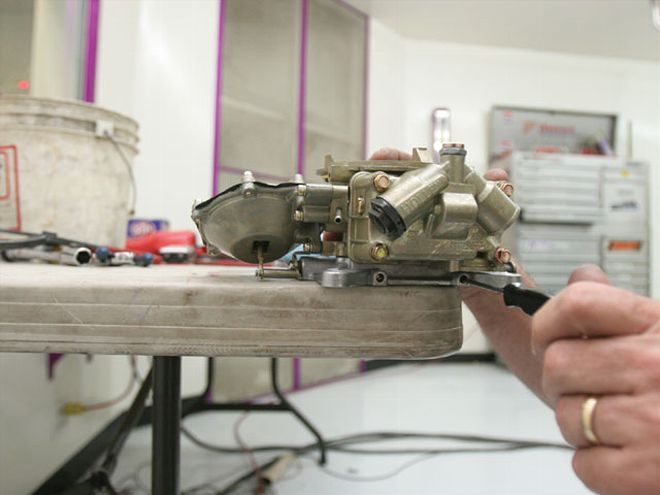 Since these carbs arrived in separate boxes, they were not used to dial in the crate engine and needed a minor adjustment. There are two small screws on each outboard carb that control the volume of the air/fuel mix coming through the idle well. We turned them 11/2 turns out to get the engine to idle.
Since these carbs arrived in separate boxes, they were not used to dial in the crate engine and needed a minor adjustment. There are two small screws on each outboard carb that control the volume of the air/fuel mix coming through the idle well. We turned them 11/2 turns out to get the engine to idle.
Since this is a crate engine, we didn't have to thrash it together before the dyno session. Instead, the engine arrived already broken in with an intake manifold, a distributor, an ignition box, a balancer, and a water pump. The timing was preset at 34 degrees to run pump gas. All we needed were the carbs, exhaust, pulleys, and either a flexplate or a flywheel.
With a tiny bit of secondary carb tuning, the engine made its best number almost immediately, which makes for a pretty boring dyno session, but in a good way. With a larger roller cam (of course), a single-plane intake, and maybe a little tuning on the as-cast heads, this engine would see an easy 500 hp, but we'd give up a little of the tire-shredding torque down low and the curb appeal of all those carbs. Or, we could just drop it in a car as-is, which is likely what any normal person would do. We're thinking about that Duster with a 3.73:1-geared 83/4-inch rear and a four-speed, then going crazy with the Scat Pack graphics. Who's in?
PART NUMBERS AND PRICES PART PN SOURCE PRICE 410 Magnum Six Pack crate engine 5153527 Mopar Performance Parts $7,119.00 Holley Six Pack 500-cfm outboard carbs 0-4790 {{{Summit}}} Racing 319.95 each Holley Six Pack 350-cfm center carb 0-4792 Summit Racing 419.95 Hooker headers coated '70 to '72 A-Body headers 5204-1HKR Summit Racing 719.95 Six Pak throttle linkage kit 4529061 Summit Racing 81.95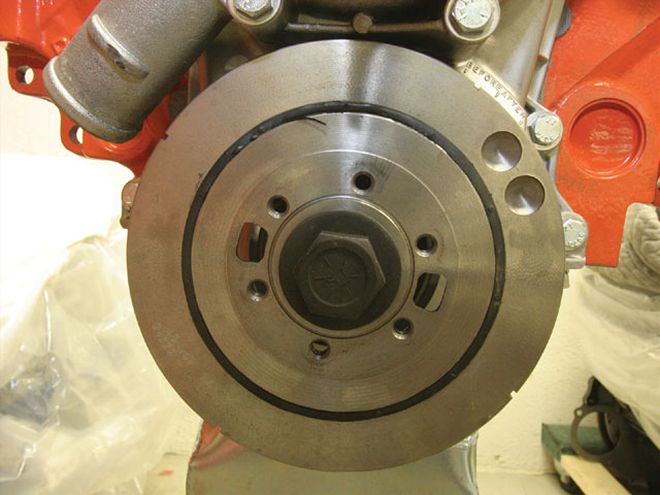 The 410 is internally balanced, meaning you can use a neutral-balance flywheel or flexplate.
The 410 is internally balanced, meaning you can use a neutral-balance flywheel or flexplate.
410 Six Pack Power
The peak power numbers shown below were made with 34 degrees of timing and the jets that were preinstalled in the carburetors. More interesting is the torque curve that hits 400 lb-ft at 2,750 rpm and stays there until past the horsepower peak. That's all four gears of tire smoke.
The term Mopar was first used by Chrysler in the '20s.